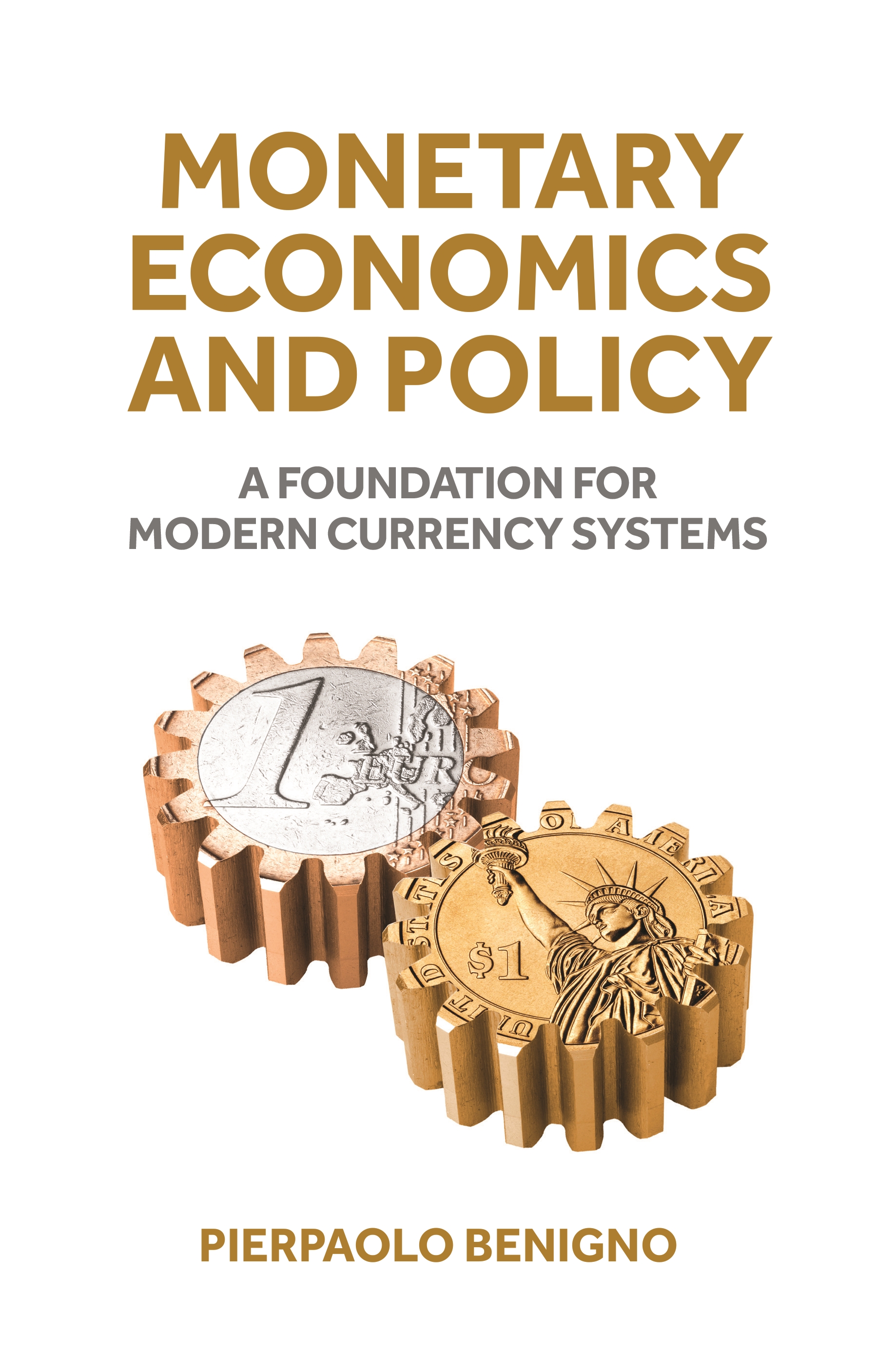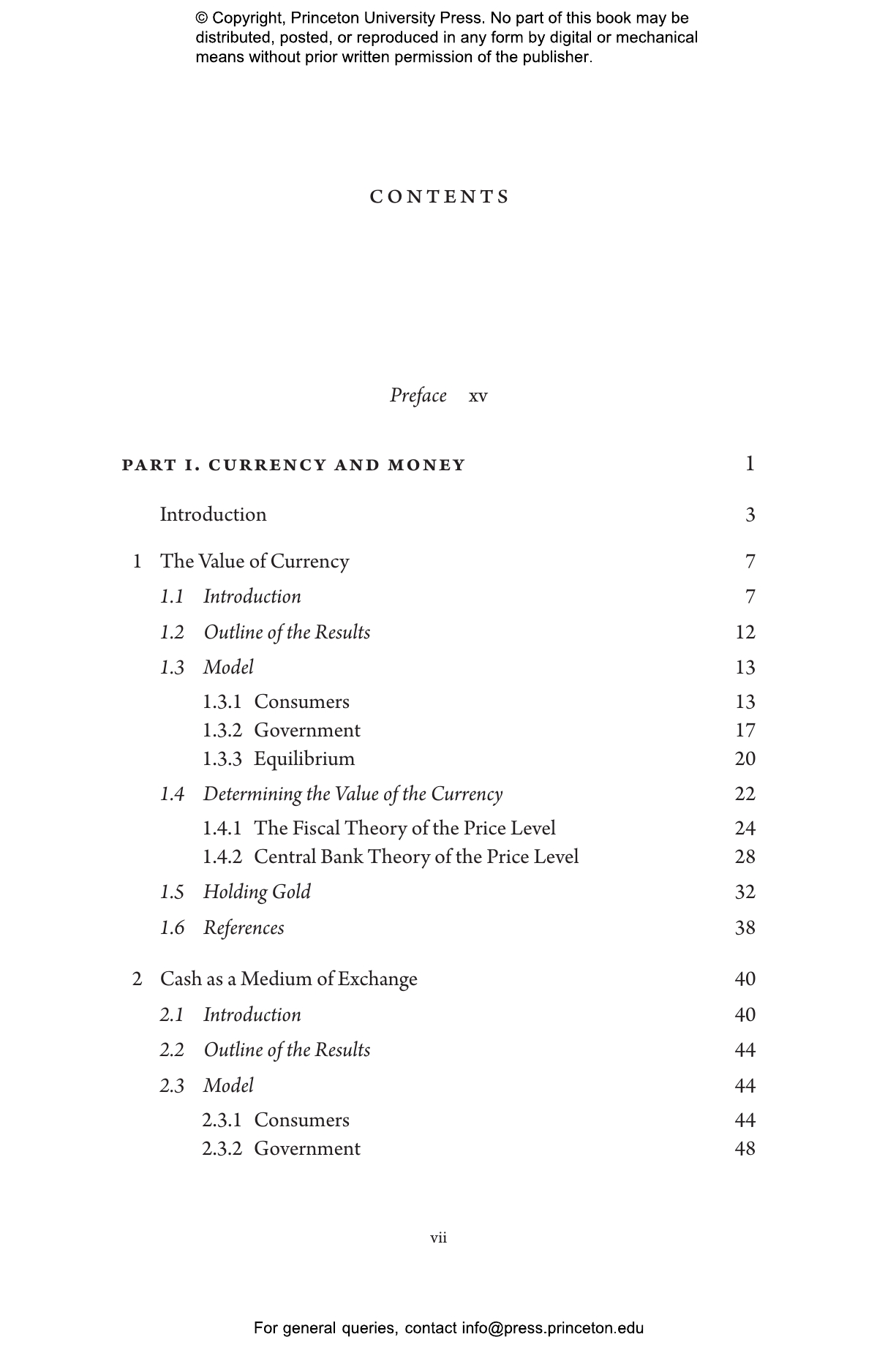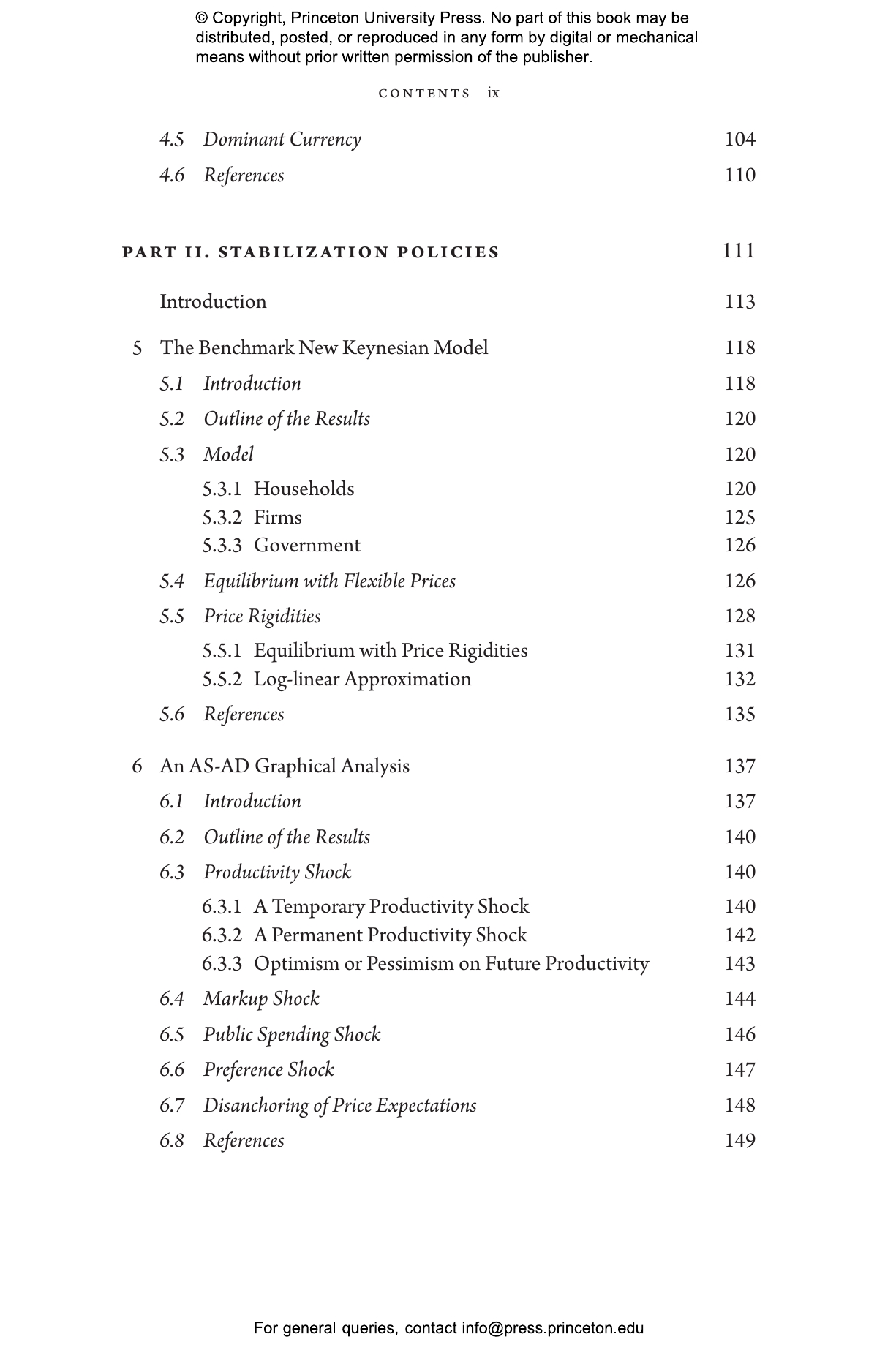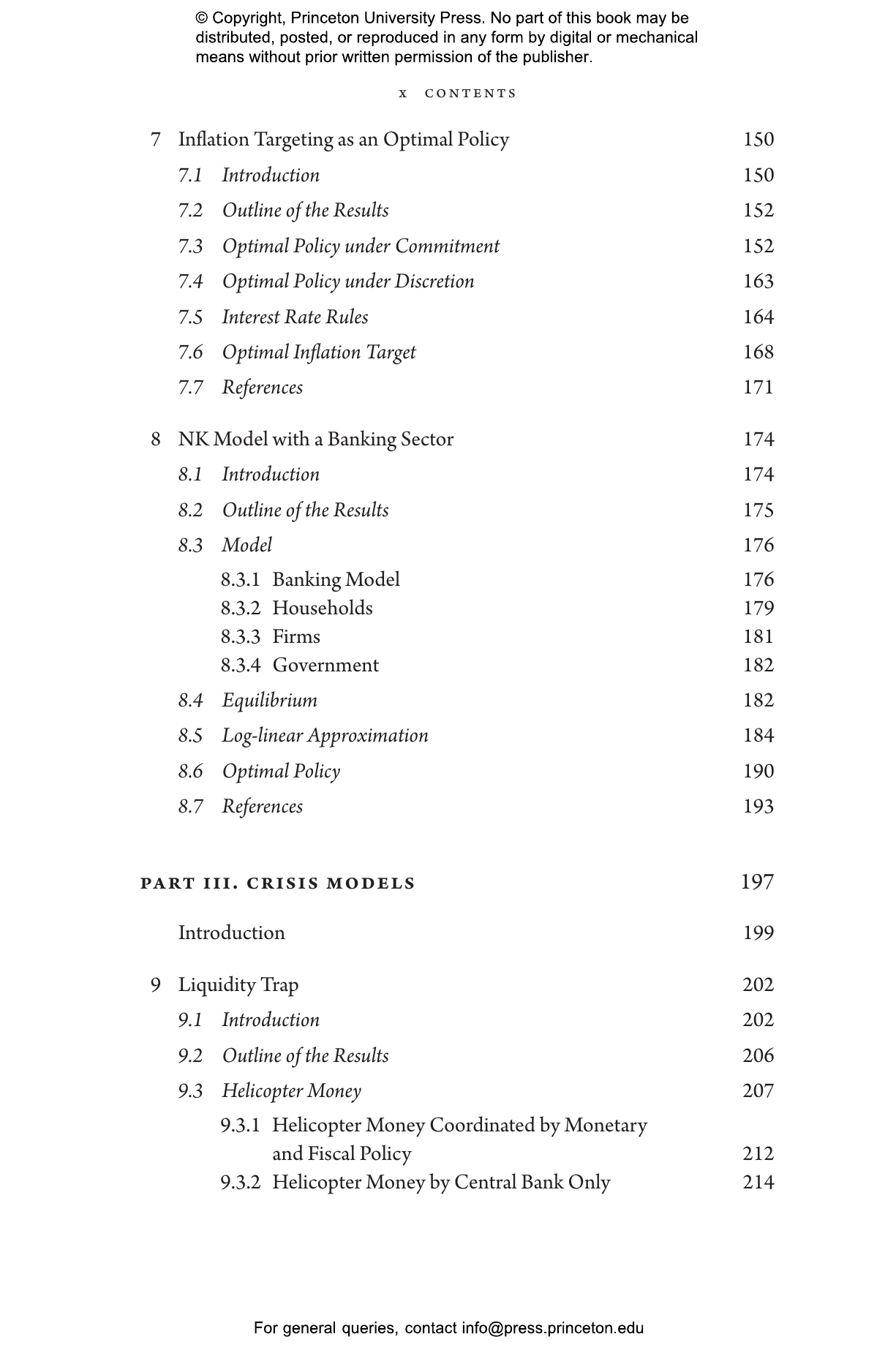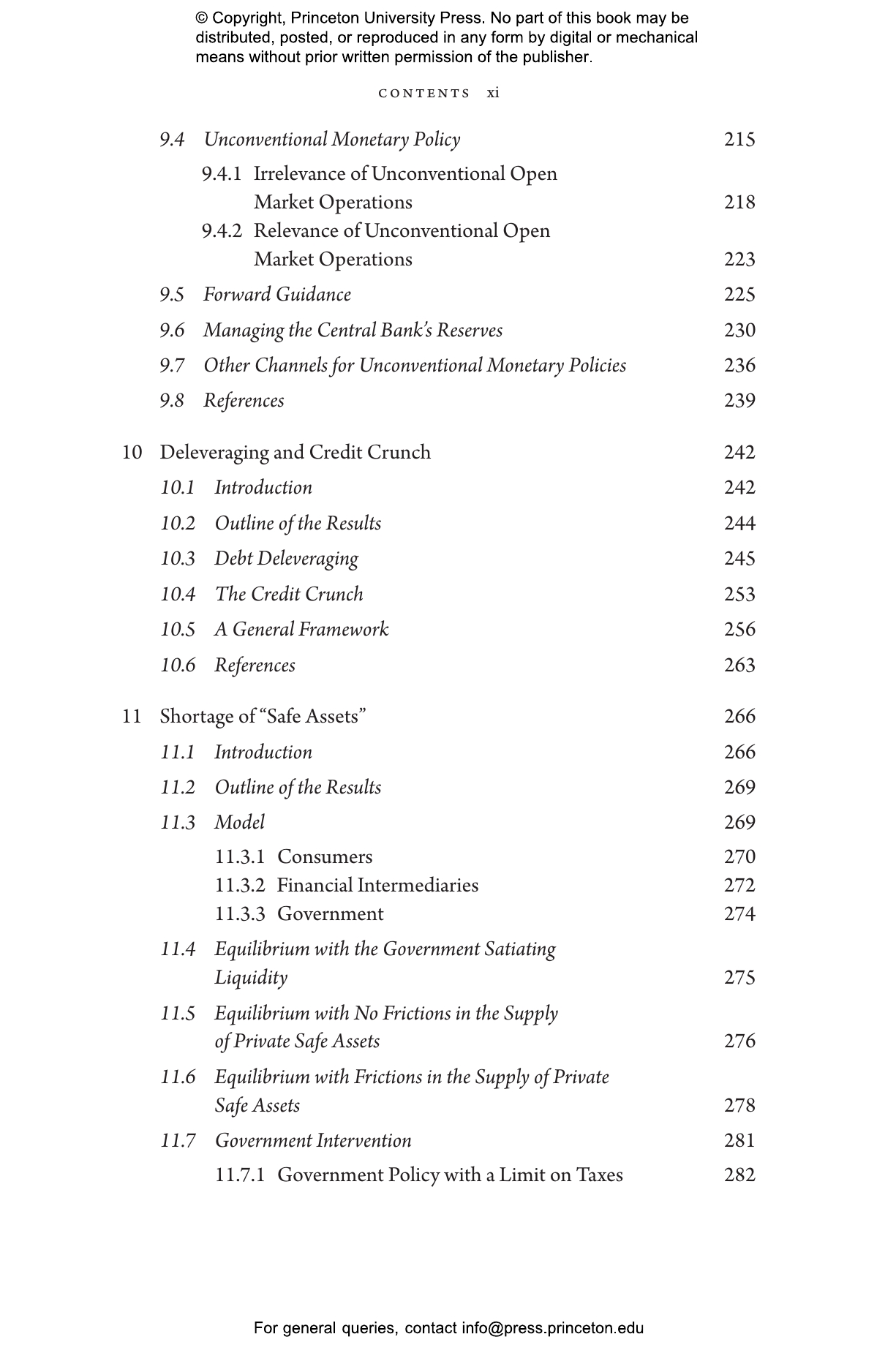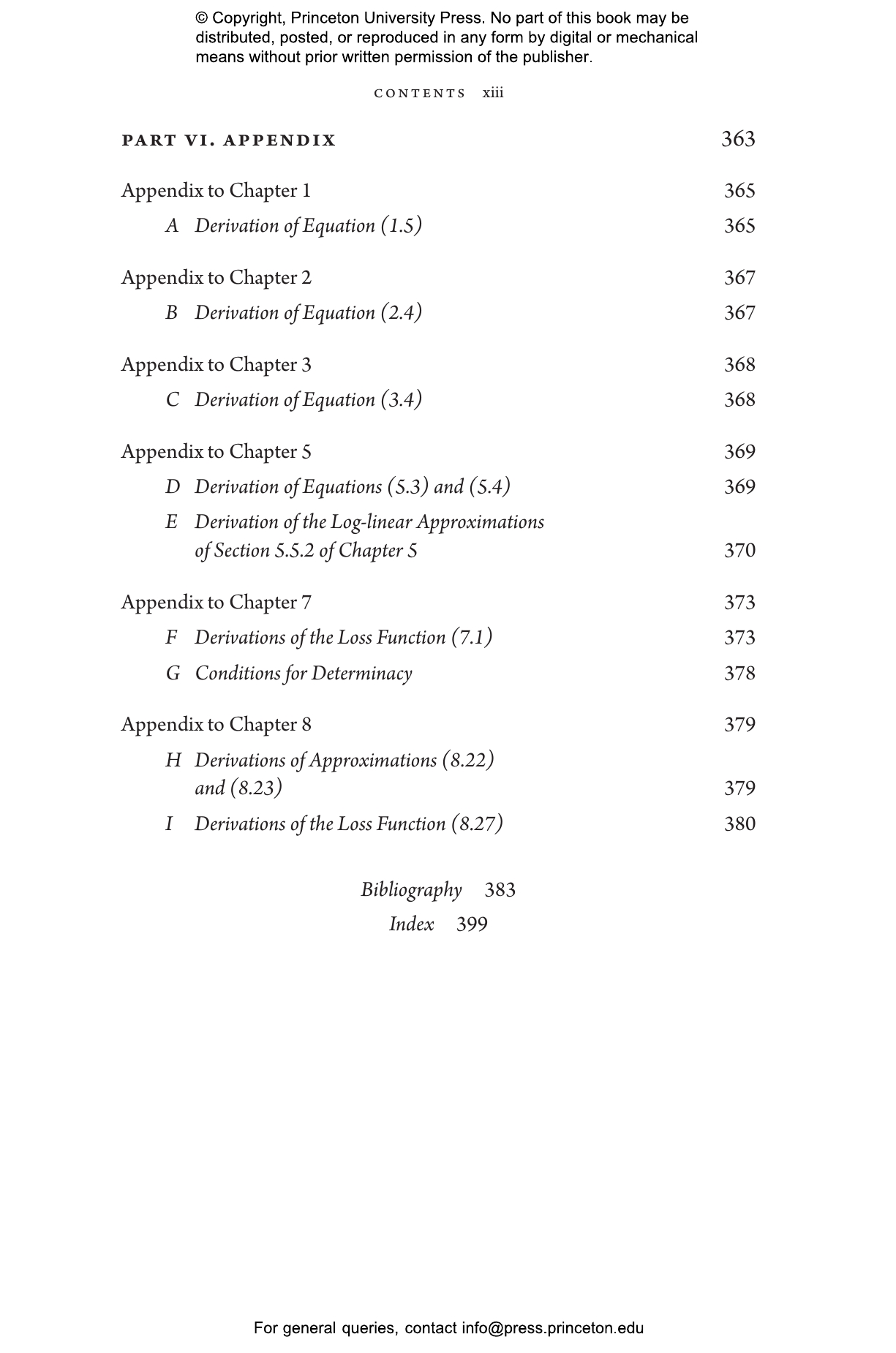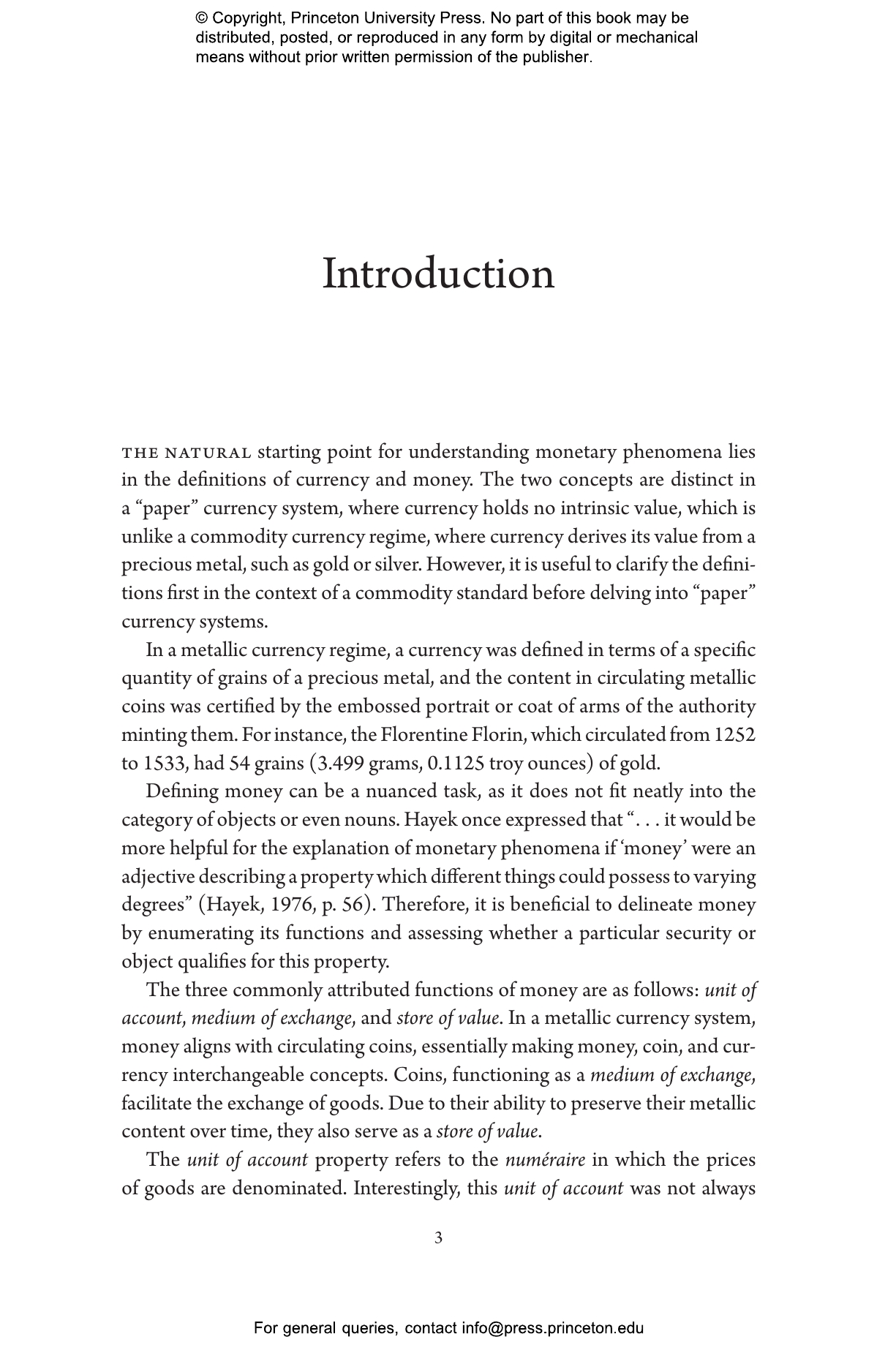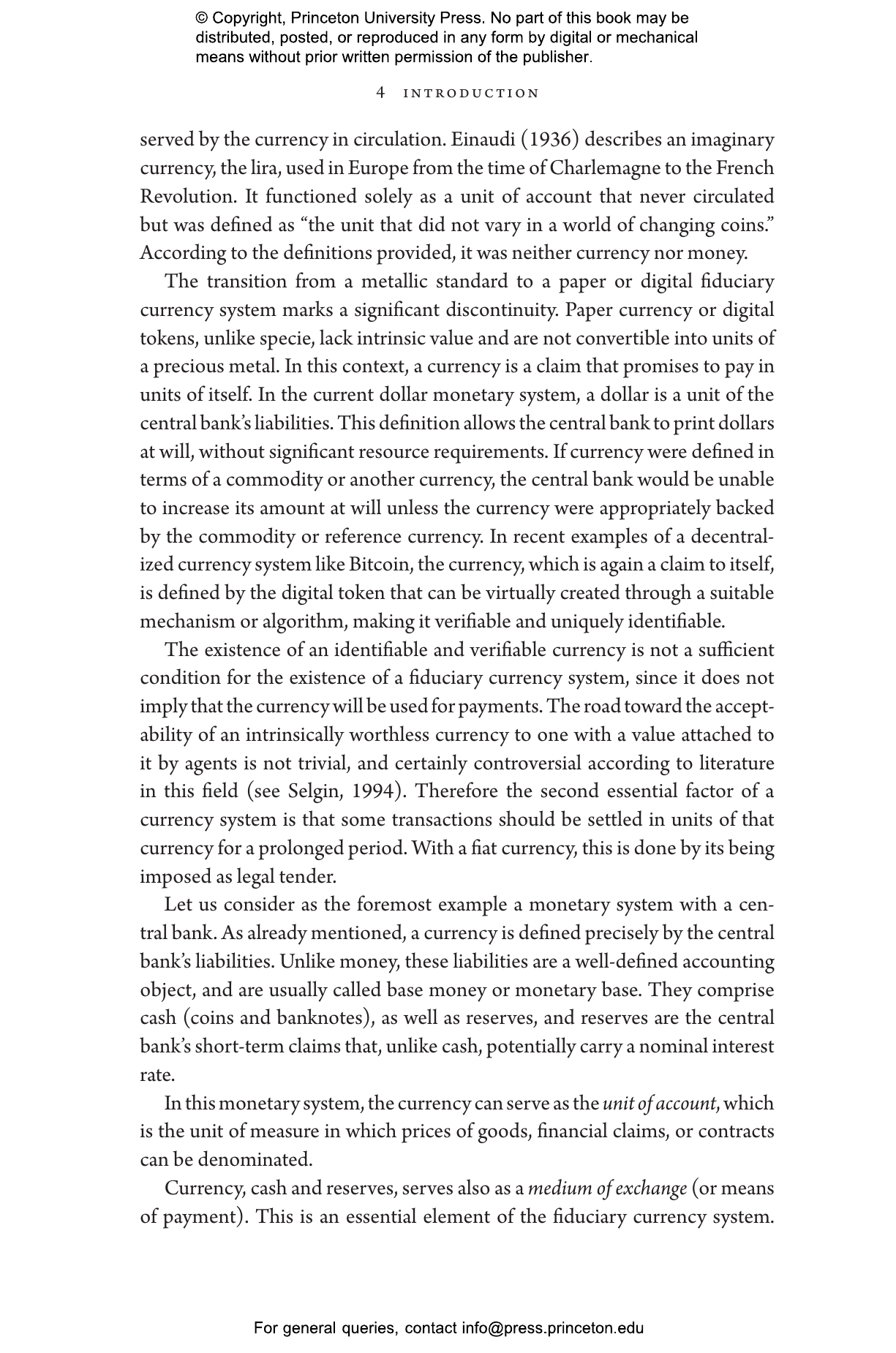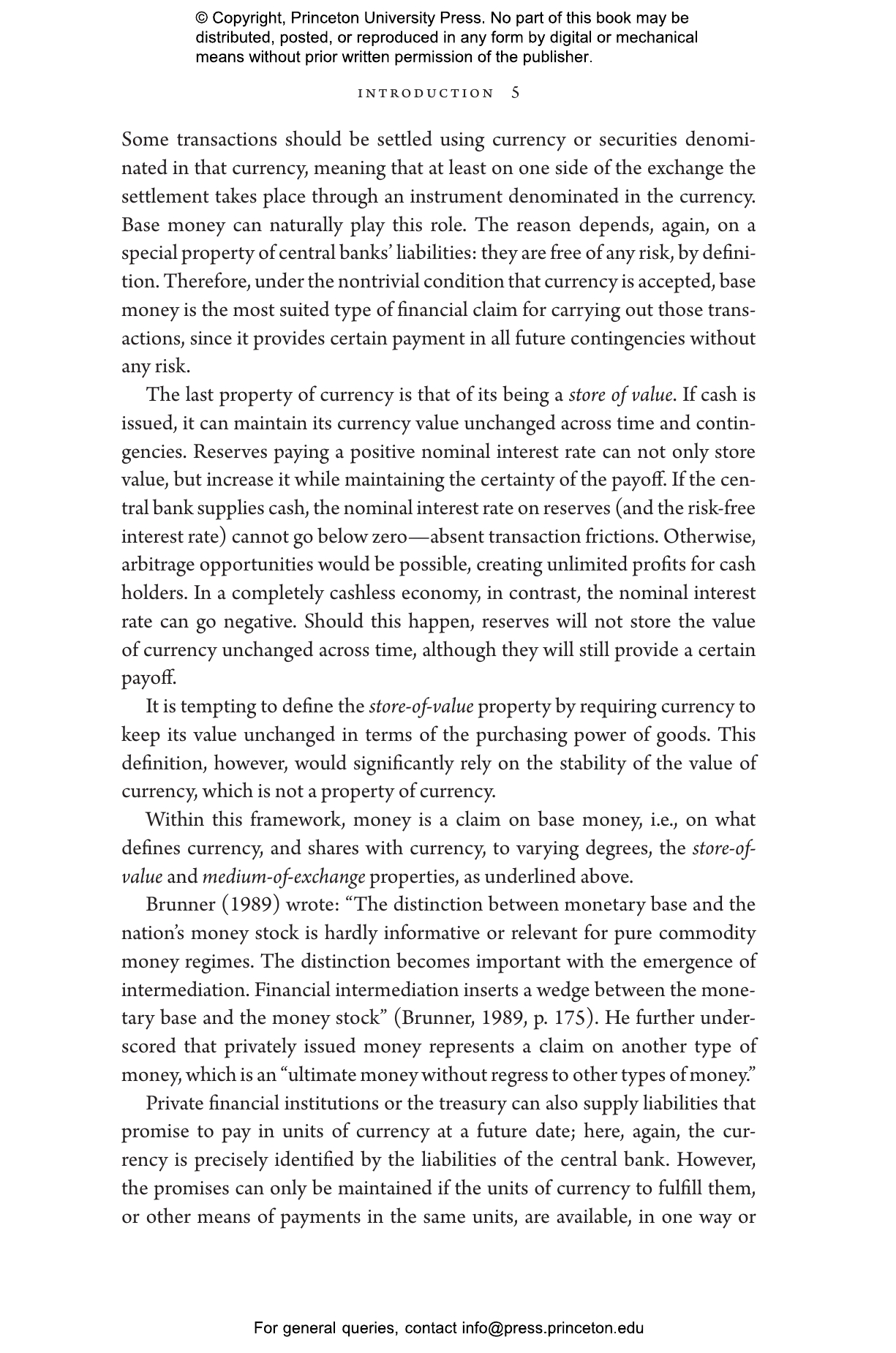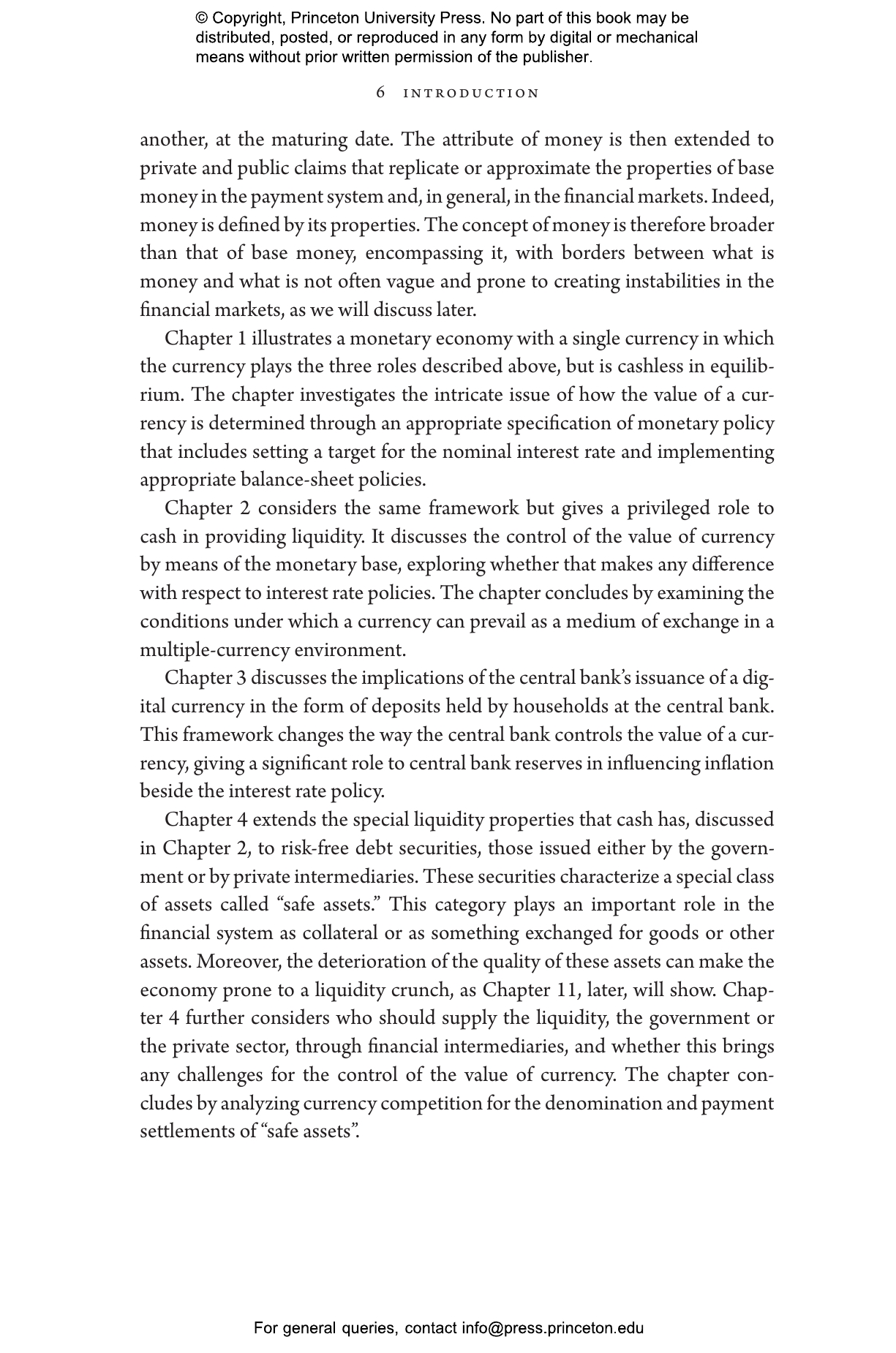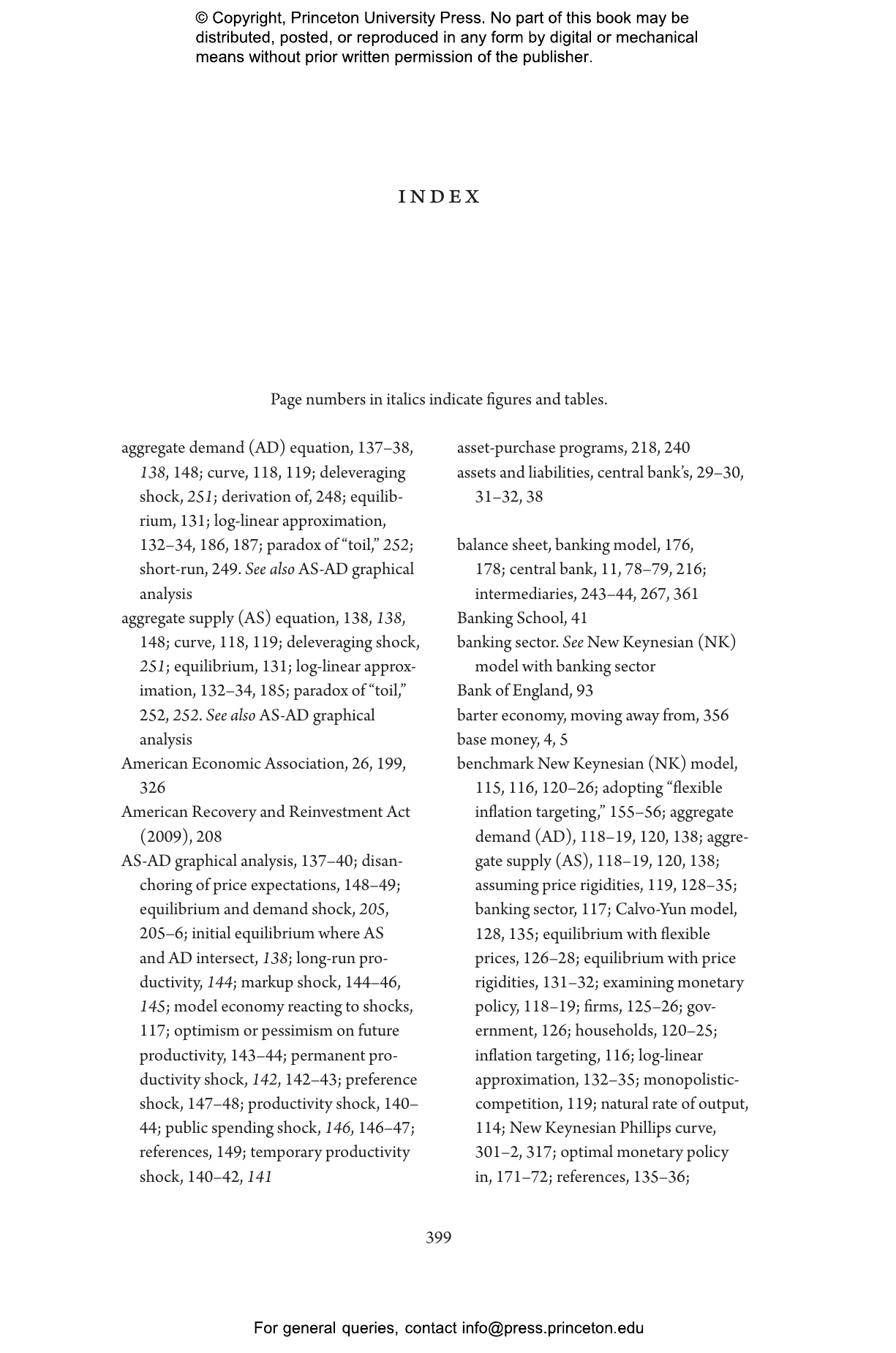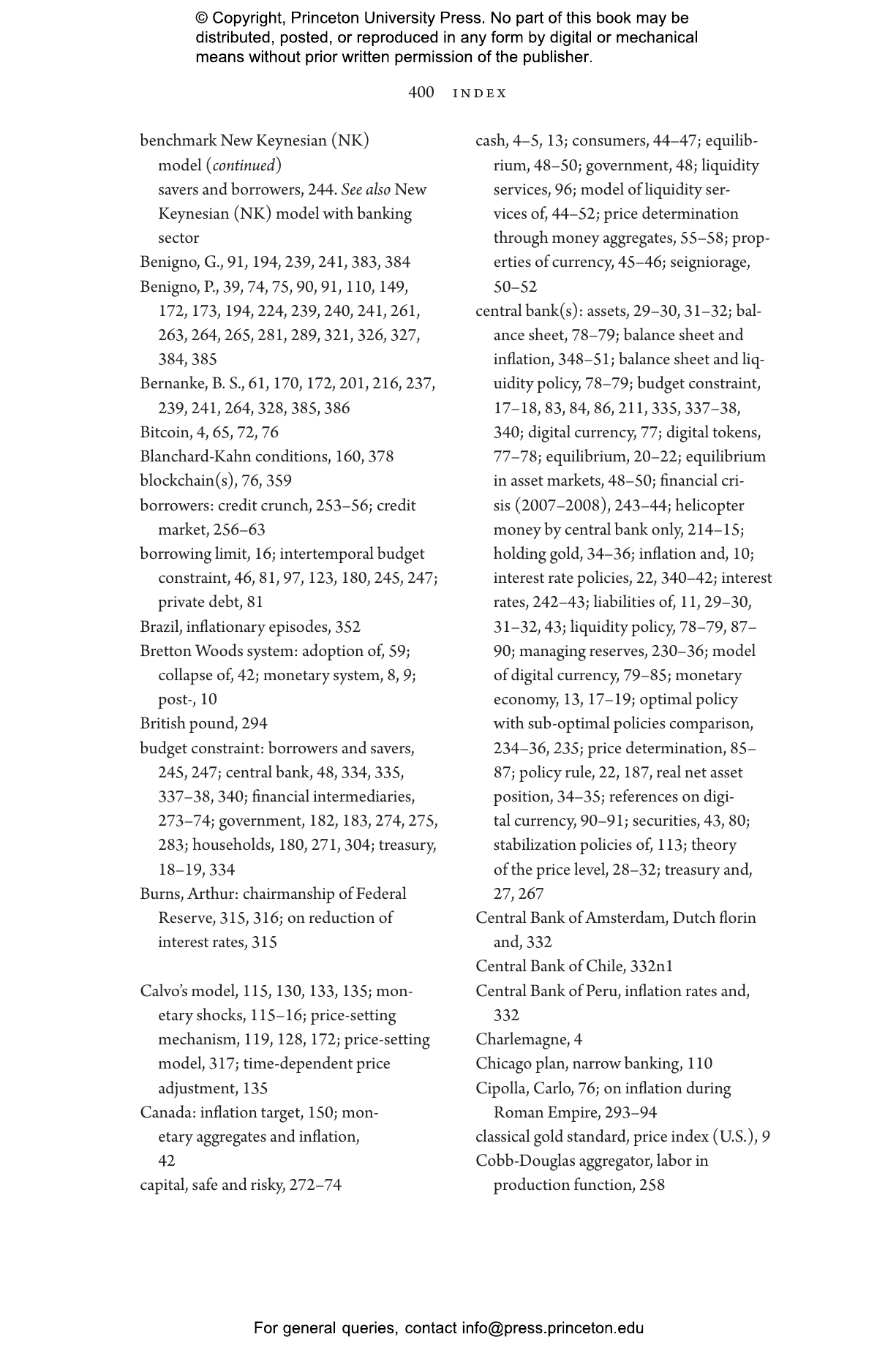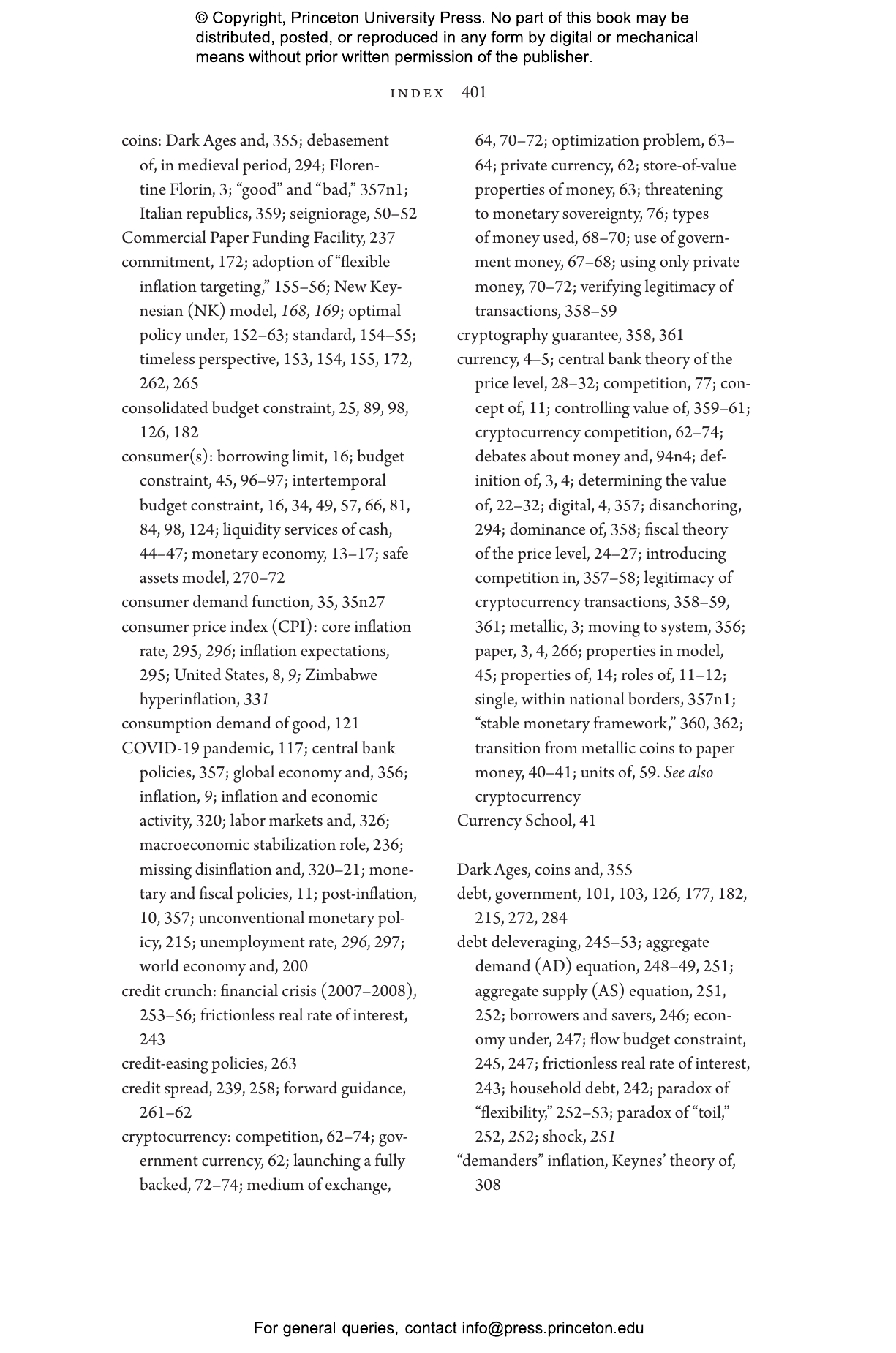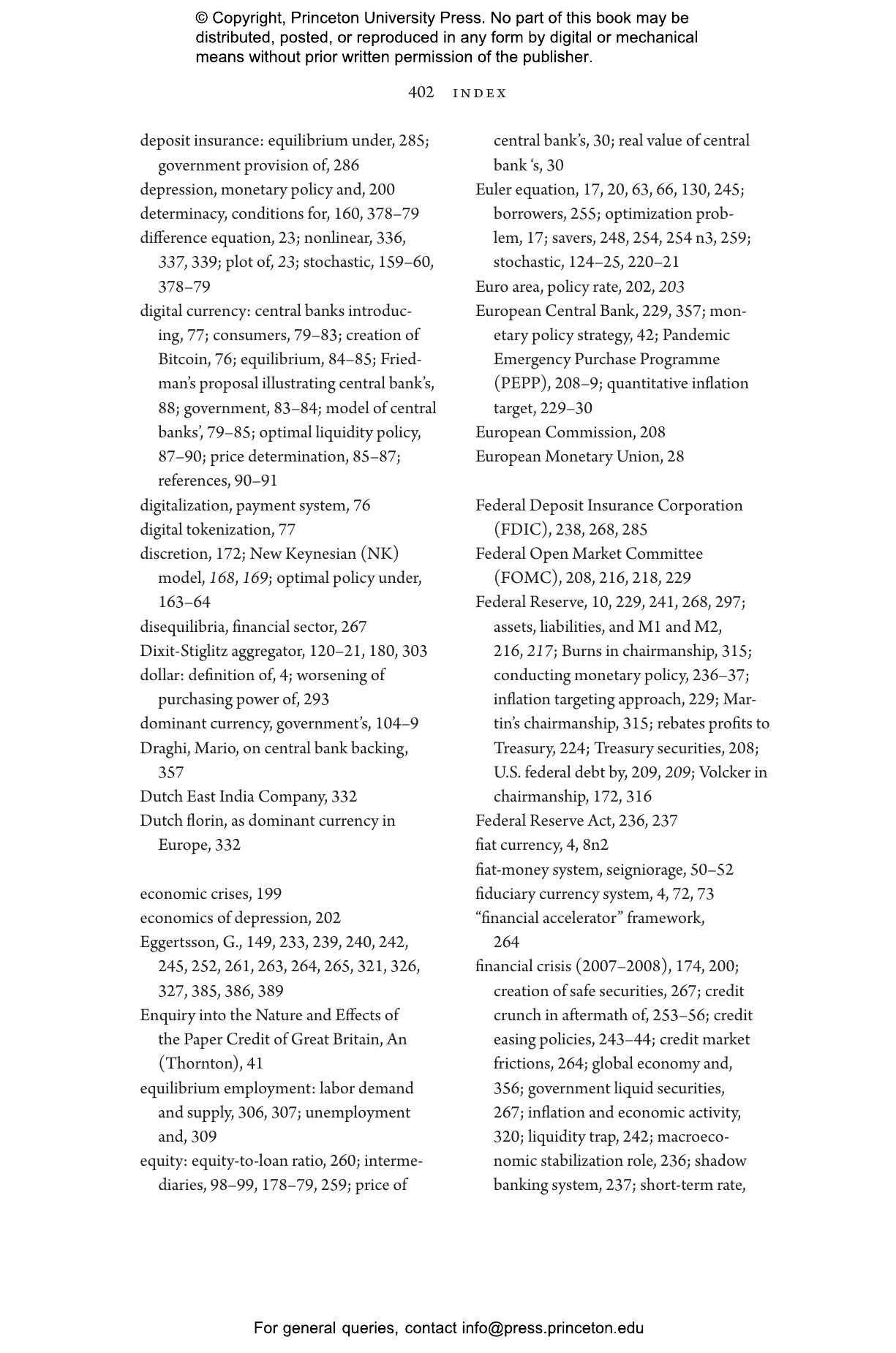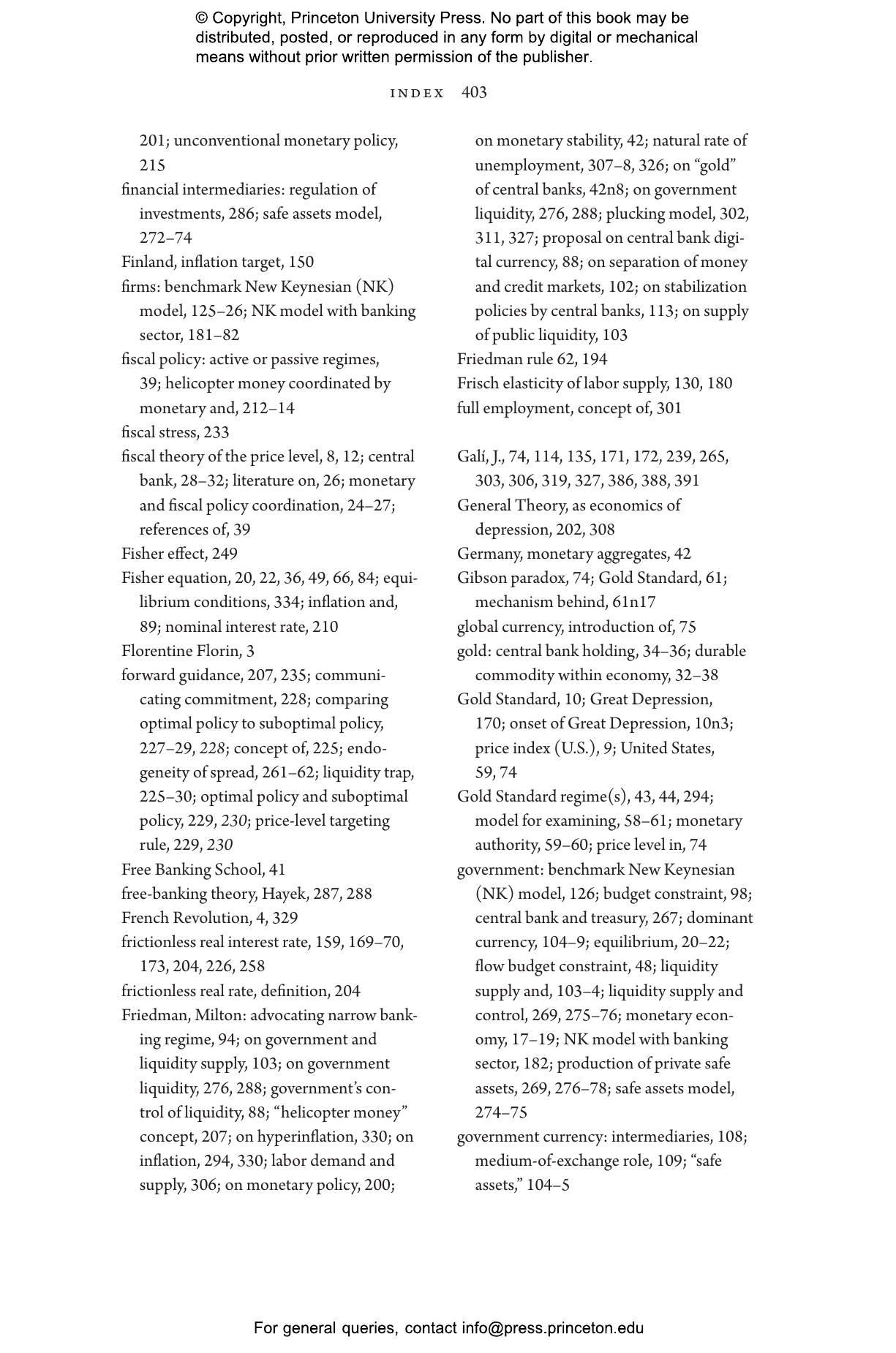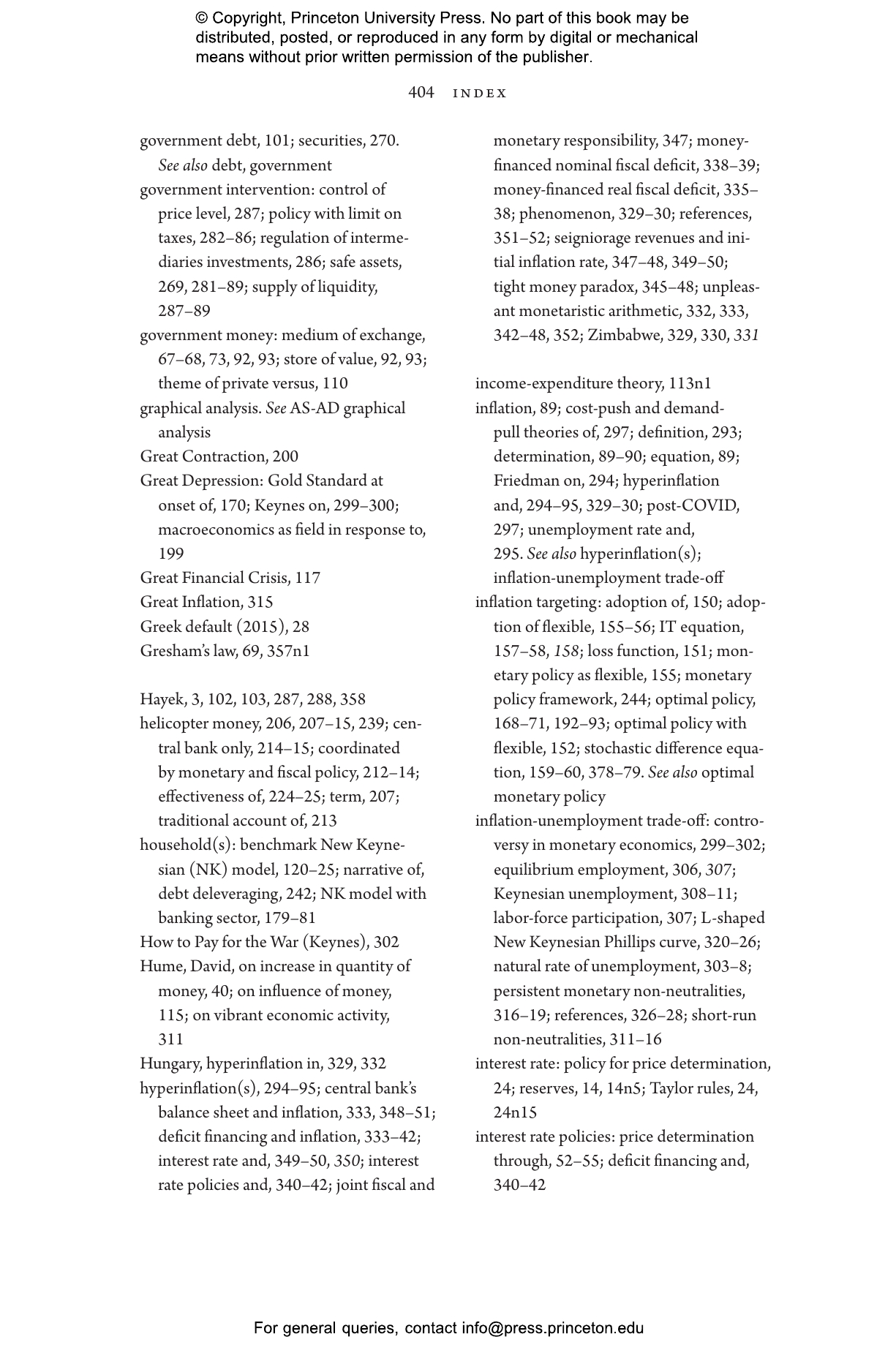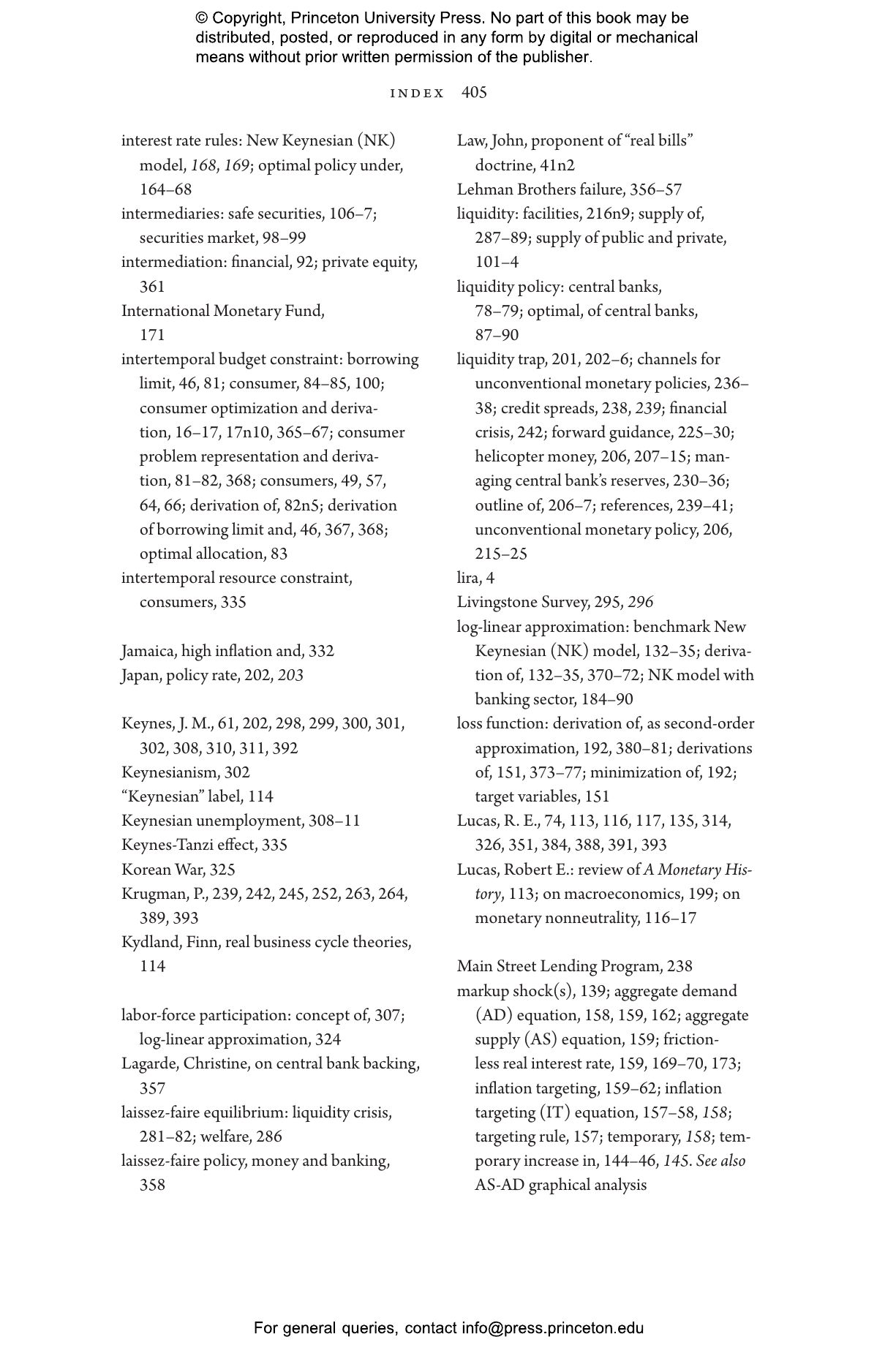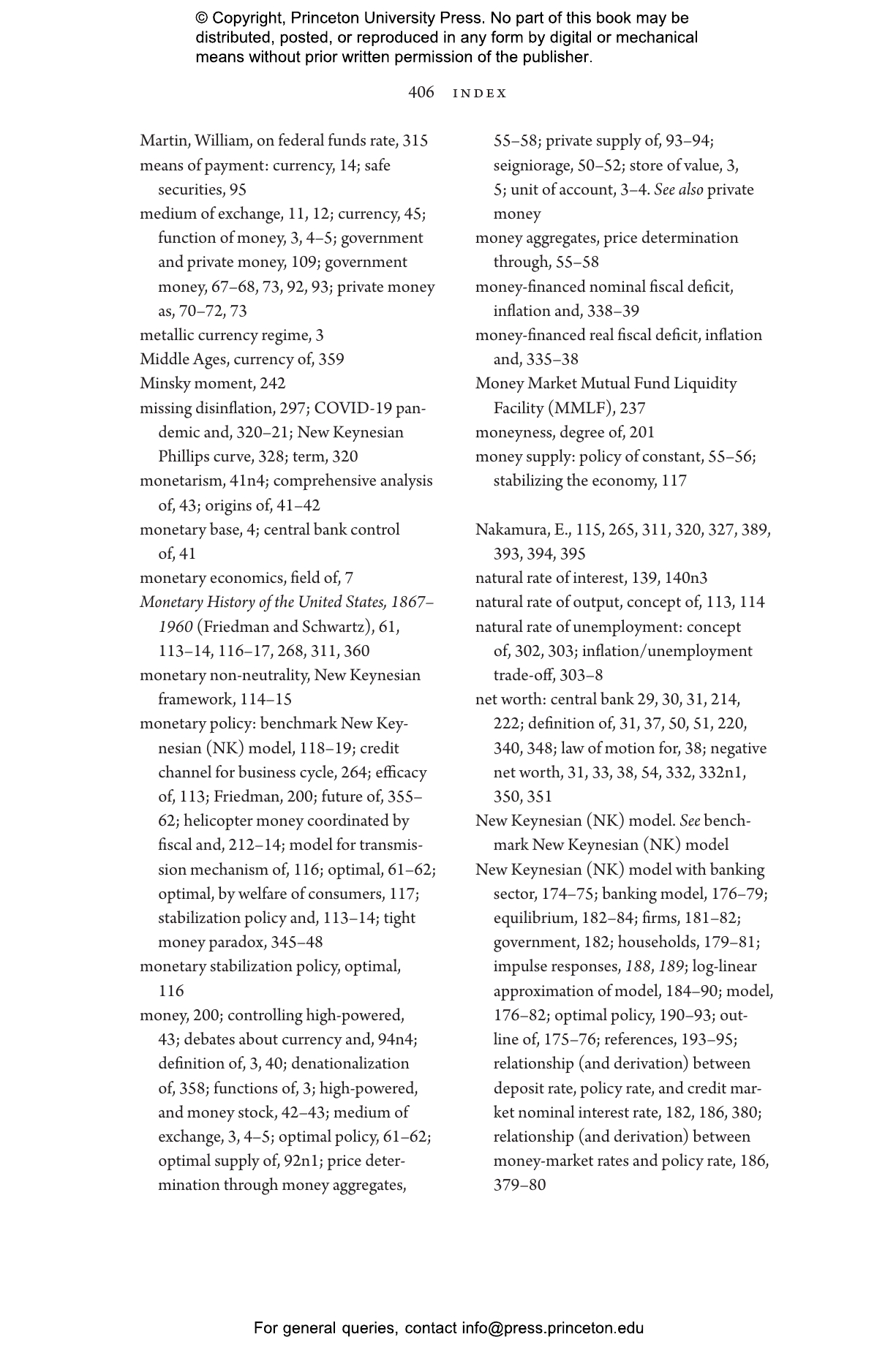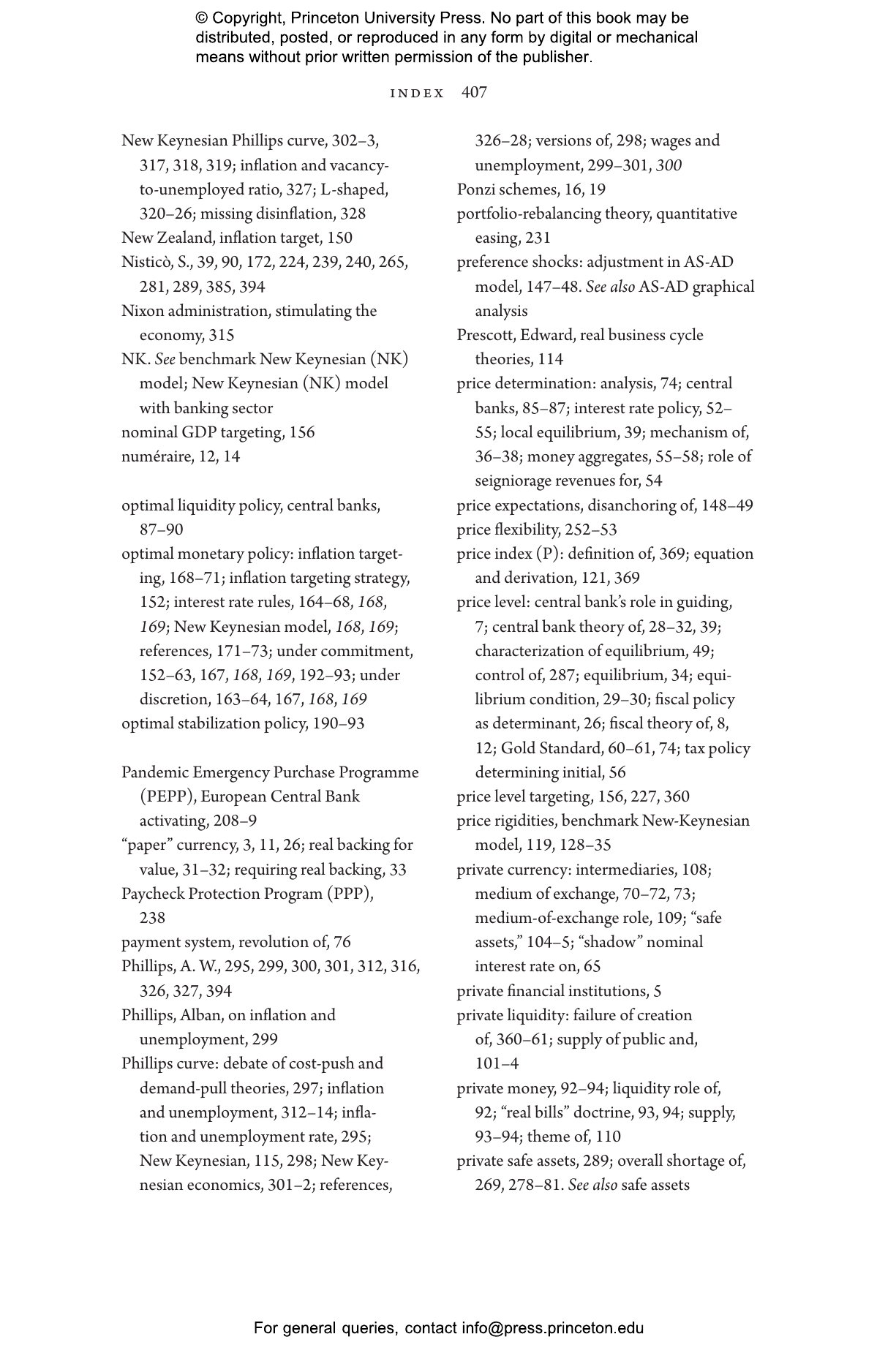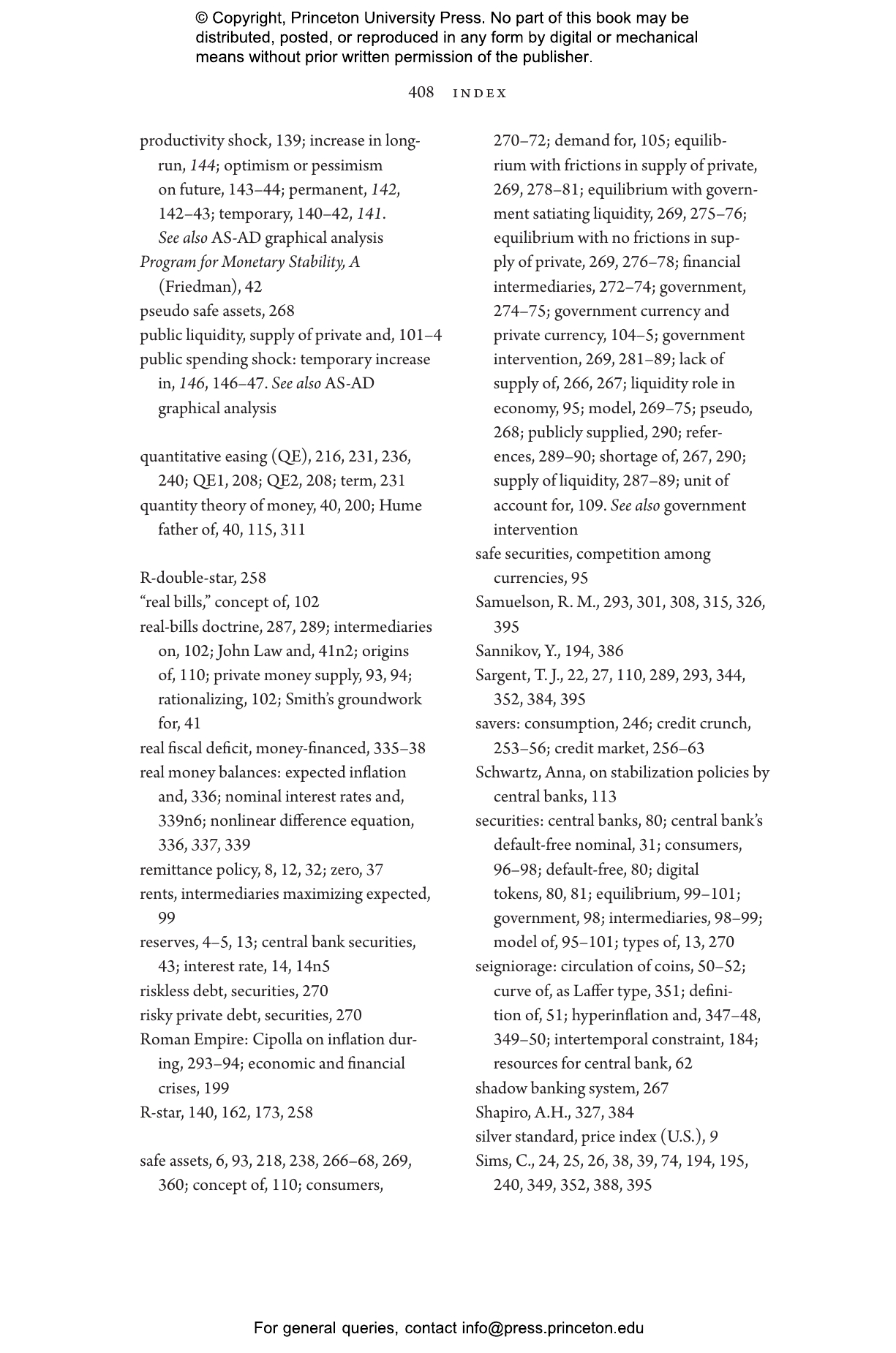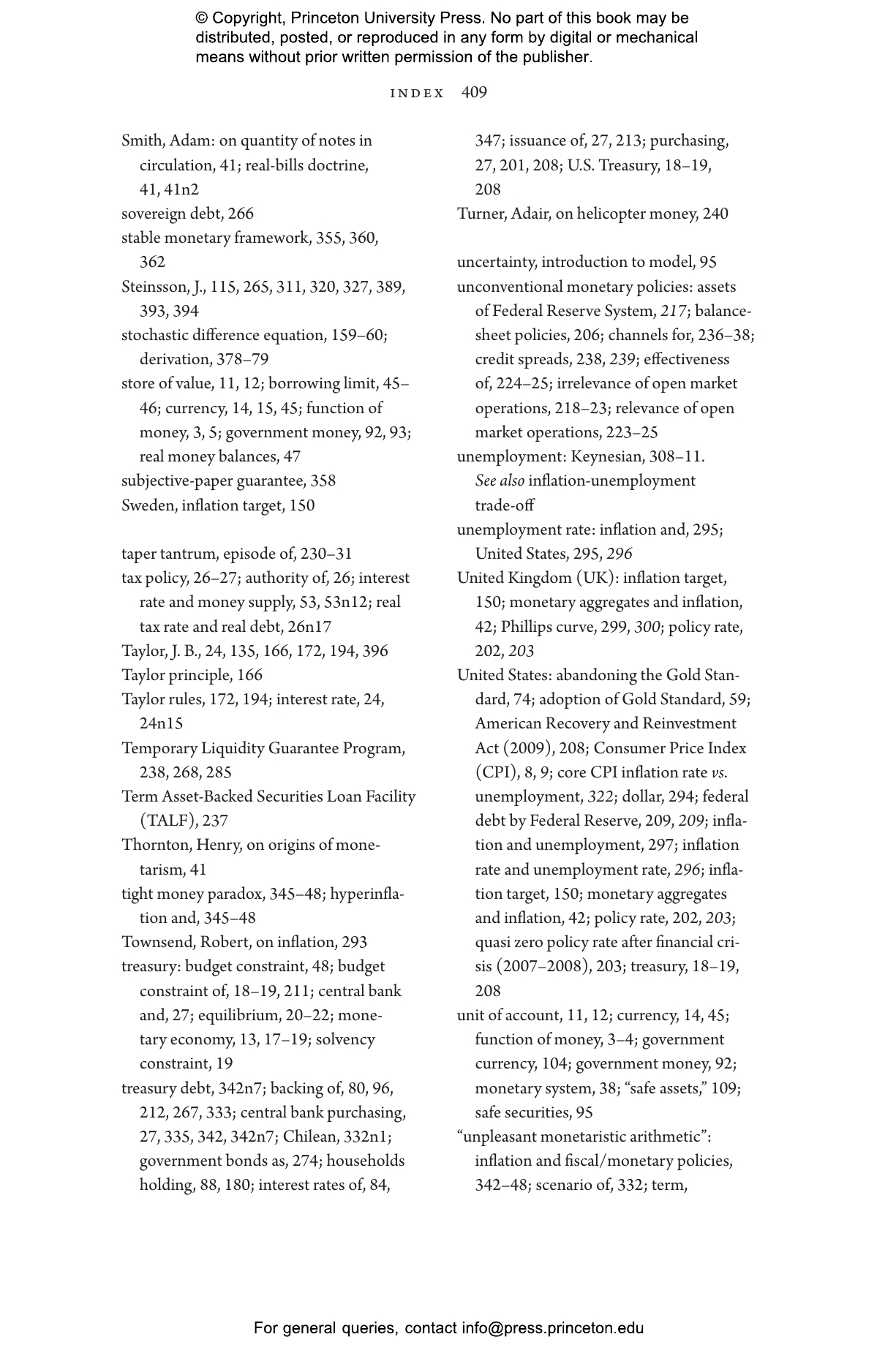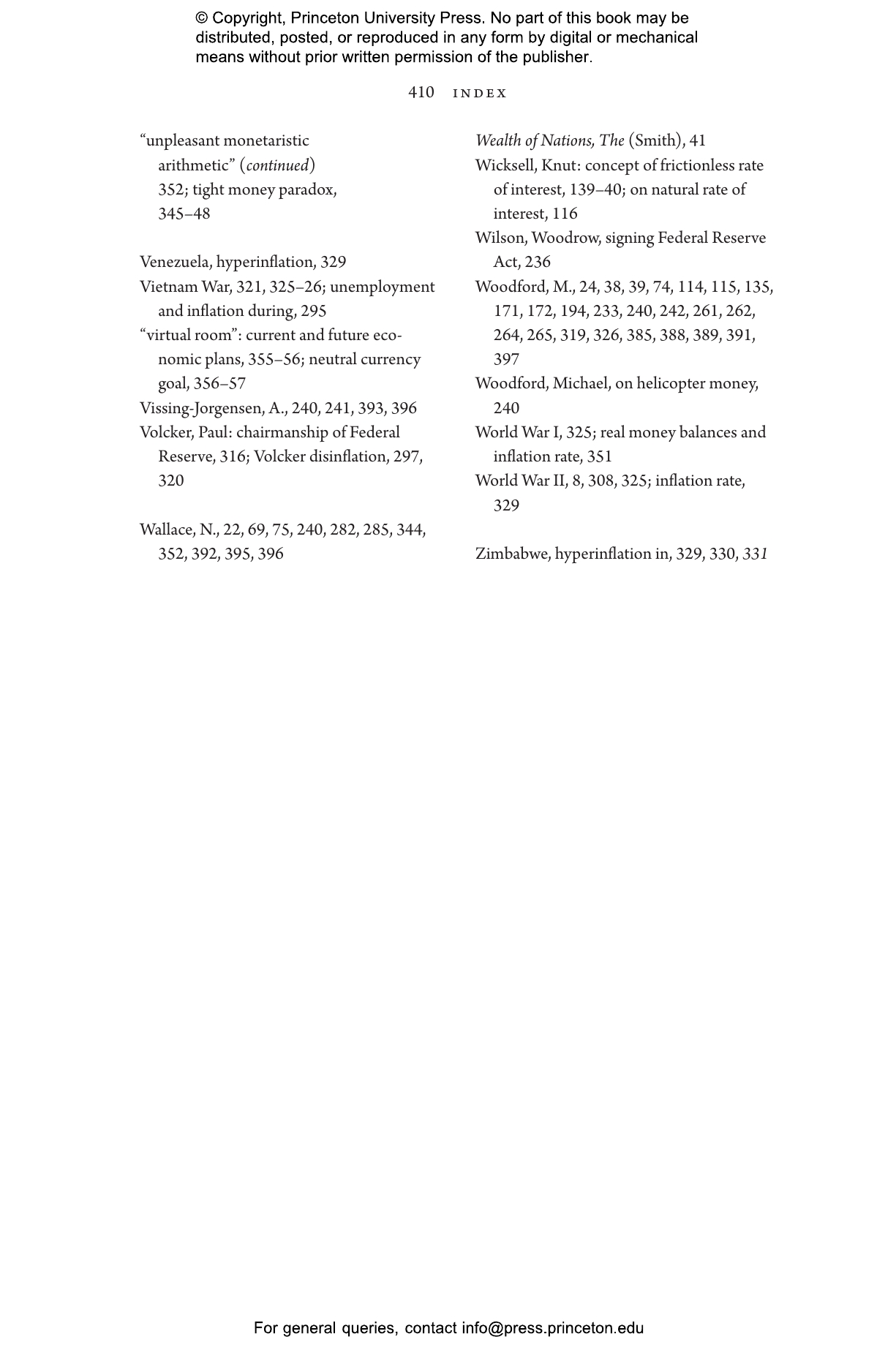Benigno examines how central banks control the value of their currency amid competition from cryptocurrencies and private money-like securities; discusses the desirability of inflation targeting for macroeconomic stabilization; and explores theoretical grounds for the unconventional monetary policies seen in the recent period of zero nominal interest rates, including forward guidance, quantitative and credit easing, and helicopter money. He accompanies his analysis with an innovative visual representation of the New Keynesian model and inflation-targeting policies.
Benigno’s novel framework also allows the study of monetary policy normalization through quantitative tightening toward what has become the “new normal.” He discusses the optimal provision of liquidity and the different roles of the government and financial intermediaries. Finally, he recounts historical controversies regarding the inflation-unemployment trade-off to understand the 2020s inflationary surge and delves into the causes and dynamics of hyperinflations, tracing them to the subtle, ambiguous linkages between monetary and fiscal policy and weak balance-sheet conditions for the central bank.
Pierpaolo Benigno holds the Chair of Monetary Macroeconomics at the Institute of Economics of the University of Bern, where he is deputy head of the Department of Economics.
“This book fills a clear void in the existing literature about monetary economics. I am not aware of an existing work that can engage students of monetary economics while unraveling the mysteries of monetary theory. Deep thoughts about the nature of money are clearly presented early and drawn upon to analyze conventional and unconventional monetary policy, crisis management, and inflation. The presentation is rigorous and self-contained.”—Behzad Diba, Georgetown University
“Pierpaolo Benigno’s book provides a rigorous framework for understanding how central banks manage to implement their price stability mandates. This is shown to require an appropriate design of monetary policy, with a purposeful use of the different instruments available, including interest rates on reserves, asset purchases, and remittances to the treasury. This monograph is a must-read for those who wish to deepen their knowledge of the theoretical foundations underlying the science of monetary policy.”—Jordi Galí, author of Monetary Policy, Inflation, and the Business Cycle
“In the years since the Global Financial Crisis, a stream of unexpected developments has upended earlier paradigms of monetary theory and policy. Among other changes, central bank balance sheets expanded dramatically, government debts reached levels previously seen only after major wars, digital monies including cryptocurrencies emerged, and inflation, once thought to be firmly under control, surged across the world. Pierpaolo Benigno’s book offers a masterful update and synthesis of post-crisis monetary economics. It will be required reading for anyone hoping to understand the evolving role of money.”—Maurice Obstfeld, University of California, Berkeley


